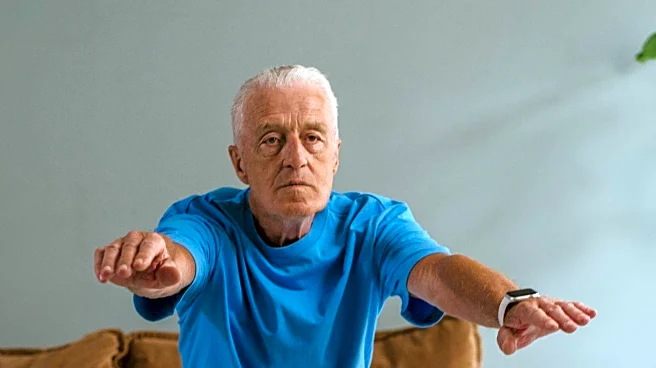What's Happening?
A study conducted by the University of Chicago Medicine, published in PLOS One, has found that increasing walking pace by 14 steps per minute can significantly improve physical function in older adults. The research involved 102 participants with a median age of 79, who were divided into two groups: one walking 'as fast as safely possible' and the other at a comfortable pace. The faster group averaged 100 steps per minute, while the control group averaged 77. The study demonstrated that those who walked faster showed better functional capacity, including longer distances in a six-minute test. The findings suggest that even slight increases in walking intensity can lead to substantial health benefits for older adults.
Why It's Important?
The study highlights the importance of physical activity in maintaining health and strength in older adults, particularly those at risk of frailty. By encouraging a faster walking pace, older individuals can improve their physical function, potentially reducing the risk of falls and other health issues associated with frailty. This research could influence public health recommendations and exercise programs aimed at older populations, emphasizing the benefits of increased walking intensity. Healthcare providers and policymakers may consider integrating these findings into strategies to promote healthier aging and improve quality of life for seniors.
What's Next?
The study's authors suggest using tools like metronomes to help individuals increase their walking pace safely. As the research gains attention, it may lead to further studies exploring the long-term effects of increased walking intensity on various health outcomes in older adults. Additionally, community programs and healthcare initiatives might adopt these findings to encourage more active lifestyles among seniors, potentially leading to broader public health improvements.











